
by Kanimozhi BV | Jan 27, 2025 | Driveway, Exterior
A resin bound driveway is an increasingly popular choice for UK homeowners looking to combine durability, aesthetics, and eco-friendliness. But how much does a resin bound driveway cost to install?
In this guide, I’ll walk you through the factors that influence the price, how resin driveways compare to other materials, and what you can expect when investing in one.
How Much Does a Resin Bound Driveway Cost in the UK?
What is the Cost by Driveway Size?
Here’s a general breakdown of costs based on driveway size:
- Small driveway (20m²): £800–£2,400.
- Medium driveway (50m²): £2,000–£6,000.
- Large driveway (100m²+): £4,000–£12,000.
Factors such as location and labour rates can affect these figures, so it’s always a good idea to request multiple quotes.
How Much Does a Resin Driveway Cost Per m²?
The cost of a resin driveway per square metre in the UK typically ranges between £40 and £120 per m². This variation depends on:
- Type of resin used:
- UV-stable resin: £60–£120 per m² (prevents discolouration from sunlight).
- Non-UV-stable resin: £40–£80 per m² (cheaper but prone to yellowing over time).
- Base preparation requirements:
- If the existing surface is suitable, installation will cost less (£40–£70 per m²).
- For new base preparation, additional costs of £10–£30 per m² are added.
- Driveway size: Larger driveways often benefit from economies of scale, reducing the cost per m².
| Factor |
Cost Range per m² |
| Resin Material (UV-stable) |
£60–£120 |
| Resin Material (Non-UV-stable) |
£40–£80 |
| Base Preparation (if needed) |
£10–£30 |
| Decorative Features |
£10–£20 |
Pro Tip: Larger driveways (e.g., 100m² or more) often come with bulk discounts, reducing the average cost per m².
How Much Will a Resin Driveway Cost Compared to Alternatives?
A resin bound driveway may have a slightly higher upfront cost compared to materials like tarmac. However, its long-term benefits, such as lower maintenance and greater aesthetic appeal, make it a worthwhile investment.
Is a Resin Driveway Cheaper than Paving?
Initial Installation Costs: Resin vs. Block Paving
The cost of installing a resin bound driveway typically ranges from £40–£120 per square metre, whereas block paving costs between £50–£100 per square metre. While the prices are similar, resin installations are often faster and more seamless.
Long-Term Value and Maintenance
Resin bound driveways require minimal maintenance, whereas block paving can demand frequent cleaning and weed removal. Over time, this makes resin a more cost-effective choice.
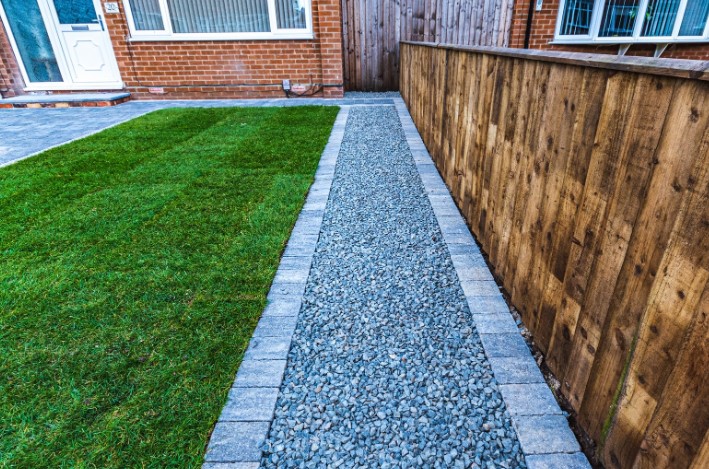
Can I Install a Resin Bound Driveway on an Existing Surface?
Suitable Base Materials for Resin Driveways
Yes, resin bound driveways can often be installed on existing surfaces like tarmac or concrete, provided they are in good condition. This reduces preparation costs and speeds up the installation process.
When a New Base Might Be Needed?
If the existing surface is cracked, uneven, or poorly drained, it may need to be replaced with a more stable base like MOT Type 1. While this adds to the cost, it ensures the driveway’s longevity and performance.
How Long Will a Resin Driveway Take to Install?
Installation Timeline for Resin Bound Driveways
A typical resin driveway installation takes 1–2 days for an average-sized driveway (50m²). Larger projects or those requiring extensive base preparation may take longer.
How Weather Affects Installation?
Resin driveways need dry and moderate weather conditions for proper curing. Rain or extreme cold can delay the process and may lead to additional costs if work is rescheduled.

What Factors Affect the Cost of a Resin Bound Driveway?
Type and Quality of Resin
- UV-stable resin: More expensive but prevents discolouration over time.
- Non-UV-stable resin: Cheaper but may fade or yellow in direct sunlight.
Base Preparation Costs
- Removing an old driveway: £50–£200 depending on its size and material.
- Laying a suitable base (e.g., concrete or tarmac): £10–£30 per square metre.
Customization and Extras
- Decorative borders or patterns: Add £10–£20 per square metre.
- Drainage systems: Costs vary based on the driveway’s design and local regulations.
Is Planning Permission Required for a Resin Bound Driveway?
UK Regulations for Driveway Installation
In most cases, planning permission isn’t required if the resin driveway is permeable, meaning it allows water to drain through naturally.
When Planning Permission May Be Needed?
If the driveway is non-permeable or affects drainage, you may need to seek approval from your local council. Ensuring compliance with drainage regulations can add to the overall cost.

Resin Bound Driveway vs. Alternatives: Which Should You Choose?
Resin Bound vs. Tarmac Driveways
- Cost: Tarmac ranges from £45–£90 per square metre, making it slightly cheaper.
- Durability: Resin offers a longer lifespan and better resistance to cracking.
- Aesthetics: Resin driveways come in various colours and finishes, whereas tarmac is limited in style.
Resin Bound vs. Block Paving
- Resin driveways are seamless, reducing the risk of weed growth.
- Block paving can move or settle over time, requiring more maintenance like removing grass between paving stones.
- For decorative appeal, resin driveways often have the edge.
Final Thoughts
A resin bound driveway is a versatile, durable, and low-maintenance option for homeowners in the UK. While the upfront cost ranges between £40 and £120 per square metre, the long-term benefits make it an excellent investment.
Whether you’re replacing an old surface or starting from scratch, a resin driveway offers a seamless blend of function and style by knowing how much does a resin bound driveway cost. Ready to transform your driveway? Reach out to local professionals and request quotes to find the best option for your budget.
Frequently Asked Questions (FAQs)
1. How long does a resin driveway last?
A well-installed resin driveway can last between 10 and 20 years with proper maintenance.
2. Is a resin driveway slippery in winter?
Resin bound driveways are designed to be slip-resistant, even in wet or icy conditions.
3. Can I repair a resin driveway if it cracks?
Yes, small cracks can be repaired by professionals, although severe damage may require resurfacing.
4. Are there government grants for resin driveway installation?
Some homeowners may qualify for grants under eco-friendly initiatives if the driveway enhances drainage or improves the home’s energy efficiency.

by Kanimozhi BV | Jan 24, 2025 | Kitchen, Interior
Wondering how much does kitchen fitting cost? Kitchen renovations are one of the most rewarding home improvement projects. Not only does a modern kitchen improve functionality, but it also adds significant value to your property. However, understanding the cost of kitchen fitting is essential to avoid overspending.
Whether you’re planning a full renovation or simply installing a worktop, this guide provides a detailed breakdown of costs, factors to consider, and even tips for DIY projects like fitting a worktop without cabinets.
How Much Does It Cost to Fit a Kitchen Labour Only?
If you already have all your kitchen materials and just need a professional to install them, you’re looking at labour-only costs.
In the UK, kitchen fitters charge an average of £150–£250 per day, depending on location and expertise. For a typical installation, labour costs range between £1,500 and £3,500 for an average-sized kitchen.
What Influences Labour-Only Costs?
- Kitchen Size: Larger kitchens require more time and labour, increasing costs.
- Location: Labour rates tend to be higher in cities like London and the South East compared to other parts of the UK.
- Additional Professionals:
- Electricians: £300–£1,000 for rewiring.
- Plumbers: £150–£400 for fitting sinks or taps.
- Tilers: £200–£800 for flooring or splashbacks.
To save money, ensure you hire experienced fitters, compare multiple quotes, and confirm what’s included in the service.

How Much Does Kitchen Fitting Cost?
How to Fit a Kitchen Worktop Without Cabinets?
What Are the Common Scenarios for Fitting a Worktop Without Cabinets?
You might need to fit a worktop without cabinets in the following cases:
- Temporary kitchens during home renovations.
- Minimalist designs, such as floating worktops.
- Situations where cabinets are delayed or being replaced later.
For this DIY project, you’ll need:
- Tools: Spirit level, power drill, saw, screws.
- Materials: Wall brackets, support legs, fixing plates, and sealant.
Step-by-Step Guide
- Measure and Plan: Mark the desired height and position of the worktop on the wall.
- Install Wall Brackets: Secure heavy-duty brackets evenly along the wall for support.
- Add Support Legs: For longer worktops or heavier materials, attach adjustable legs or beams for extra stability.
- Fix the Worktop: Screw the worktop into place, ensuring it is level on all sides.
- Seal the Edges: Apply sealant to protect the worktop from moisture and wear.
Tips for Durability
- Ensure wall brackets are rated for the weight of the worktop.
- Avoid overhanging worktops unless they have additional supports.
- Inspect fittings periodically to maintain long-term stability.
What Is the Kitchen Fitting Cost Per Unit in the UK?
Labour-only kitchen unit fitting costs vary depending on the size and complexity of the kitchen:
- Small kitchens: £50–£100 per unit.
- Large kitchens: £100–£200 per unit.
For a 10–15-unit kitchen, expect to pay £1,000–£3,000 for labour alone. Pre-assembled cabinets are quicker to fit and less expensive, while flat-pack kitchens take more time, increasing the overall cost.
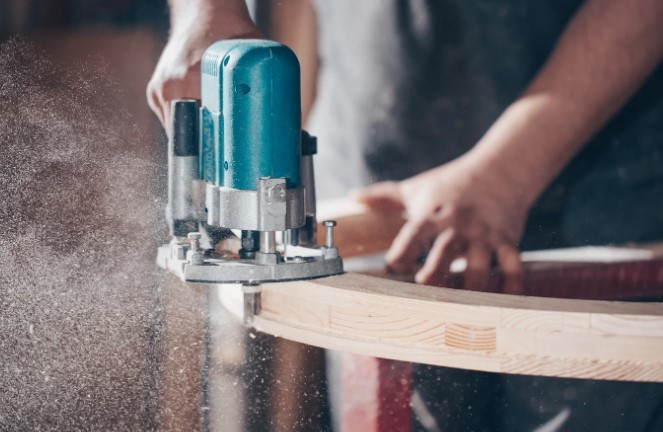
How Much Does It Cost to Fit a Kitchen Worktop?
The cost of fitting a kitchen worktop depends on the material and the complexity of the job.
Cost by Material
Laminate Worktops:
- Labour: £100–£200.
- Total cost: £150–£400 (including materials).
Granite or Quartz Worktops:
- Labour: £300–£600.
- Total cost: £1,000–£2,000+ depending on size and thickness.
Additional Costs
- Cutting for sinks or hobs: £50–£150 per cut.
- Polishing edges: £20–£50 per metre.
Professional installation is recommended for materials like granite or quartz to ensure precision and durability.
Average Cost to Fit Kitchen Sinks, Taps, and Appliances
Sink and Tap Installation Costs
A kitchen sink and tap installation costs between £150 and £400. If additional plumbing is required (e.g., relocating pipes), costs can increase to £300–£1,000.
Appliance Installation Costs
- Integrated ovens or dishwashers: £50–£100 per appliance.
- Extractor fans: £100–£250.
Professional installation ensures safety and optimal performance of your kitchen appliances.

What’s Normally Included in Kitchen Installation Costs?
Kitchen installation quotes generally include the following:
Included in Most Quotes
- Cabinet and Worktop Assembly:
- Assembling flat-pack cabinets or fitting pre-assembled units.
- Cutting and securing worktops.
- Basic Plumbing: Connecting sinks, taps, and appliances.
- Basic Electrical Connections: Plugging in or hardwiring appliances like ovens or extractor fans.
- Finishing Touches: Adjusting cabinet doors and sealing worktops.
What’s Not Included
- Rewiring: £300–£1,000.
- Plumbing upgrades: £300–£2,000.
- Flooring installation: £500–£2,000.
- Kitchen removal and disposal: £300–£600.
Request an itemised quote to understand exactly what is covered and to avoid surprise costs.
How Much Does Kitchen Replacement Cost in the UK?
Replacing a kitchen typically involves removing the old one and installing new units, worktops, and appliances.
Cost Ranges by Kitchen Size
- Small Kitchens (8–10 units): £5,000–£8,000.
- Medium Kitchens (12–15 units): £8,000–£12,000.
- Large Kitchens (20+ units): £12,000–£20,000+.
Additional Costs
- Plumbing and rewiring: £1,000–£3,000.
- Flooring replacement: £500–£2,000.
- Removing old kitchens: £300–£600.
Tips to Save Money
- Opt for modular designs instead of bespoke units.
- Use mid-range materials to balance cost and quality.
- Compare quotes from multiple kitchen fitters before hiring.
What Is the Cost to Remove an Old Kitchen?
Removing an old kitchen typically costs between £300 and £600 for labour and waste disposal. If you need to hire a skip for additional waste removal, add £200–£400 to the total cost.
Eco-Friendly Disposal
Consider hiring fitters who recycle materials like wood or metal. Some companies include environmentally responsible disposal in their quotes.

How Much Should You Pay for a Full Kitchen Installation?
For a full kitchen installation, expect to pay £3,000–£7,000, depending on size and materials. This cost includes:
- Cabinet fitting: £1,000–£3,000.
- Worktop fitting: £300–£1,000.
- Sink and appliance fitting: £300–£1,500.
For more complex installations involving rewiring or plumbing upgrades, costs may rise significantly.
How Much Does It Cost to Replace Kitchen Flooring?
Replacing kitchen flooring is a common upgrade that can dramatically change the look of your kitchen.
Average Costs by Material
- Laminate Flooring: £10–£30 per m².
- Tile Flooring: £30–£50 per m².
- Vinyl Flooring: £20–£40 per m².
Labour Costs
- Labour for flooring installation ranges from £200 to £800, depending on the size of your kitchen and the material.
Additional Costs
- Removing old flooring: £300–£600.
- Subfloor repairs or levelling: £200–£500.
Reasons to Use a Kitchen Fitter
Hiring a professional kitchen fitter ensures a stress-free and high-quality renovation.
Advantages of Hiring a Professional
- Precise Fitting: Ensures proper alignment of cabinets, worktops, and appliances.
- Safety: Professionals adhere to UK regulations for electrical and plumbing work.
- Time Efficiency: Professionals can complete the project faster than DIY methods.
- High-Quality Finish: A polished and durable result is guaranteed.
Additional Benefits
- Many fitters provide warranties for their work.
- They have specialised tools and experience to handle bespoke designs.
Conclusion
Kitchen fitting costs vary widely depending on the size, materials, and complexity of your renovation. Whether you’re planning a full kitchen installation or a DIY project like fitting a worktop without cabinets, understanding these costs can help you stay within budget. Start planning your dream kitchen today—it’s an investment in your home and lifestyle!

by Kanimozhi BV | Jan 23, 2025 | Garden, DIY Ideas, Exterior
A well-maintained lawn is the heart of any garden. In the UK, the changing seasons bring unique challenges, but by following a month by month lawn care calendar uk , you can keep your lawn healthy, green, and vibrant all year round. Below, I’ll guide you through seasonal tasks, blending practical tips with a manageable routine to ensure your lawn thrives.
Month-by-Month Lawn Care Calendar for the UK
January – Winter Rest and Light Maintenance
January is a quiet month for lawn care, as the grass is dormant. However, light maintenance ensures your lawn stays in good shape for spring.
- Keep the lawn free of debris, such as leaves, branches, and twigs.
- Avoid walking on frosty grass, as it can damage the blades and leave bald patches.
- If weeds are visible, apply a spot weed treatment using strongest weed killer, but avoid overloading the lawn with chemicals.
February – Early Preparation for Spring
As February progresses, the lawn begins waking up from its winter slumber. You can start preparing it for the active growing season.
- Inspect for moss caused by winter dampness and apply a moss killer to get rid of moss in lawn.
- Begin light mowing on dry days, but keep the mower blade high.
- Check for soil compaction in problem areas; you’ll need to aerate these spots next month.

March – The Start of Lawn Recovery
March signals the start of spring, and it’s time to focus on reviving your lawn after winter.
- Aerate the lawn to improve drainage and relieve compaction. Use a garden fork or aerator to create small holes.
- Apply a balanced spring fertiliser to encourage fresh, green growth.
- Perform the first mow of the season, ensuring the mower blade is still set to a high level. Avoid scalping the grass. Learn how to cut grass with a lawn mower with us.
April – Weed, Feed, and Overseed
April is a crucial month for promoting thick and healthy growth.
- Apply a combined weed and feed product to tackle emerging weeds while nourishing the grass.
- Overseed bare patches with grass seed to improve lawn density. Rake lightly to ensure good seed-to-soil contact.
- Keep an eye out for pests like leatherjackets and chafer grubs, as they can damage grass roots.

May – Regular Mowing and Moisture Management
In May, the lawn enters its peak growing phase and requires more frequent care. In UK there are legal time to mow lawn.
- Mow weekly, but avoid cutting the grass too short. A height of 2.5–4cm is ideal.
- If dry spells occur, water the lawn deeply once or twice a week rather than daily.
- Continue addressing any weeds with spot treatments to prevent them from spreading.
June – Maintain Peak Lawn Health
With summer in full swing, June is the month to enjoy your lawn while keeping it looking its best.
- Apply a slow-release summer fertiliser to provide consistent nutrients during the warmer months.
- Keep the lawn hydrated during extended dry periods, watering early in the morning to reduce evaporation.
- Trim the edges of your lawn for a neat and polished appearance.
July – Protect Against Heat Stress
July’s warmer weather can stress your lawn if not properly managed.
- Water deeply during heatwaves, focusing on early mornings or evenings to conserve moisture.
- Avoid mowing during extremely hot weather, as it can weaken the grass.
- Monitor for signs of fungal diseases like red thread or brown patches, and treat them promptly with appropriate lawn care products.
Get to know the best time to mow your lawn for perfect lawn care.

August – Prepare for Autumn
August is the perfect time to address any mid-summer issues and prepare for the cooler months ahead.
- Perform light aeration to improve airflow and water absorption.
- Remove any visible thatch buildup by raking or scarifying lightly.
- Maintain regular mowing, but avoid cutting the grass too short to prevent stress.
September – Scarify and Feed
September is a recovery month for your lawn after the summer heat, and it’s ideal for scarifying and feeding.
- Scarify the lawn to remove moss and thatch. Use a lawn scarifier or rake vigorously.
- Overseed thin areas to encourage dense, healthy growth before the cooler months.
- Apply an autumn fertiliser rich in potassium to strengthen the grass for winter.
October – Final Prep Before Winter
October is your last chance to prepare the lawn before growth slows down.
- Perform the final mow of the year, raising the mower blade to protect the grass like hebes from frost damage.
- Keep the lawn clear of fallen leaves and debris to prevent mould and pests.
- Apply a light top dressing (a mix of sand and soil) to improve soil structure and drainage.

November – Keep it Clean and Protected
In November, focus on keeping the lawn tidy and free from frost damage.
- Regularly remove fallen leaves using a rake or leaf blower.
- Avoid heavy foot traffic, especially on frosty mornings, to prevent compacting the soil.
December – Let Your Lawn Rest
December is a month of rest for your lawn, requiring minimal maintenance.
- Inspect for signs of moss or pests and plan treatments for the new year.
- Remove any debris to keep the lawn clean and healthy.
- Avoid mowing entirely unless absolutely necessary, and only if the weather is mild and dry.
Key Lawn Care Tips Throughout the Year
1. Mowing Tips by Season
- Spring: Begin with high blade settings and lower gradually as the grass grows.
- Summer: Mow weekly, but don’t cut the grass too short during hot weather.
- Autumn: Raise the blade height to protect the grass from stress.
- Winter: Avoid mowing unless the weather is dry and the grass is actively growing.
2. Aerating and Scarifying
- Aerating: Relieves soil compaction and improves drainage. Best done in spring and autumn.
- Scarifying: Removes thatch and moss to allow better airflow and water penetration. Scarify in September or October.
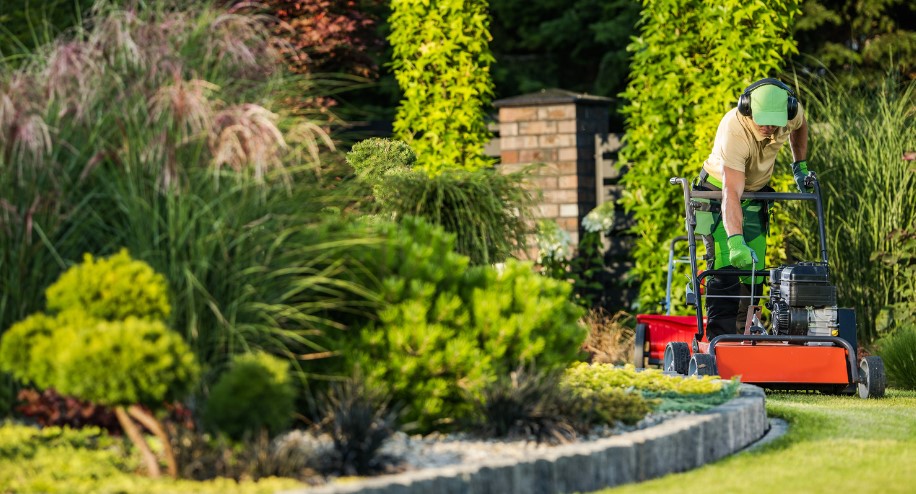
3. Feeding and Fertilising
- Use a nitrogen-rich fertiliser in spring to encourage growth.
- Apply a slow-release fertiliser in summer for consistent feeding.
- Switch to an autumn fertiliser high in potassium to prepare for winter.
4. Dealing with Common Problems
- Moss: Apply a moss killer in late winter or early spring.
- Weeds: Use a weed and feed product or apply spot treatments as needed.
- Pests: Treat for chafer grubs and leatherjackets in spring or autumn.
Conclusion
By following this month by month lawn care calendar uk, you’ll ensure your lawn stays healthy, green, and inviting year-round. Regular maintenance, from mowing and fertilising to scarifying and aerating, plays a vital role in achieving a stunning lawn that’s the pride of your garden.
Start implementing these tasks today, and enjoy a beautiful, thriving lawn every season!
FAQs About Lawn Care in the UK
1. How often should I mow my lawn during summer?
Mow once a week or every 5 days during peak growth. Avoid cutting the grass too short to retain moisture.
2. When should I scarify my lawn?
Scarify in September or October to remove moss and thatch.
3. Can I use the same fertiliser all year?
No, you’ll need specific fertilisers for each season. For example, spring and summer require nitrogen-rich products, while autumn fertilisers are potassium-based.
4. How can I prevent moss from returning?
Keep your lawn well-aerated, avoid overwatering, and apply a moss killer when needed to prevent from moss.

by Kanimozhi BV | Jan 23, 2025 | Bathroom, Interior, Kitchen
Changing a tap is one of the most common plumbing tasks in households across the UK. Whether it’s a leaking tap, an outdated design, or an upgrade to a modern fixture, hiring a plumber ensures the job is done correctly. But how much should you expect to pay?
In this guide, I’ll break down tap replacement costs, factors affecting the price, and provide a handy tap installation cost calculator by answering how much does it cost for a plumber to change a tap uk.
How Much Does It Cost for a Plumber to Change a Tap UK?
Hiring a plumber to change a tap typically costs between £80 and £150, depending on factors like the type of tap, the plumber’s hourly rate, and the complexity of the job. Here’s a quick breakdown:
| Type of Work |
Average Cost (UK) |
| Replacing a standard kitchen tap |
£100–£150 |
| Replacing a bathroom basin tap |
£80–£120 |
| Installing premium designer taps |
£150–£250 |
| Emergency plumber call-out fees |
£80–£120 |
Why Kitchen Taps May Cost More?
Replacing a kitchen tap can cost slightly more due to:
- Hard-to-access pipework under sinks.
- Additional fittings required, especially for modern or pull-out spray taps.
- Larger tap designs compared to bathroom taps.
Tap Installation Cost Calculator
Use the following tap installation cost calculator to estimate how much you’ll need to pay for a plumber to replace your tap. Simply select the options that apply to your situation.
| Factor |
Estimated Cost (£) |
| Plumber’s labour (hourly rate) |
£40–£60 |
| Standard tap replacement |
£80–£150 |
| Premium or designer tap fitting |
+£50–£100 |
| Emergency call-out (evening/weekend) |
+£40–£60 |
| Additional work (e.g., pipe repair) |
+£30–£80 |
Example Calculation:
- Plumber’s labour: £50
- Standard tap replacement: £100
- Emergency call-out: £50
- Total Estimated Cost: £200

What are the Factors That Affect Tap Replacement Costs?
Several factors can influence the final cost of replacing a tap, including:
1. Type of Tap Being Installed
The type of tap you choose will have a significant impact on the cost:
- Basic taps: Mixer or pillar taps cost as little as £20–£30.
- Mid-range taps: Modern taps with swivel spouts range from £50–£100.
- Premium taps: Designer or smart taps with advanced features like touchless controls can cost £150–£300 or more.
2. Plumber’s Hourly Rate
In the UK, plumbers charge £40 to £60 per hour, depending on location and demand. In London or other metropolitan areas, rates can go up to £80 per hour or more.
3. Location of Your Property
- London and South East: Higher labour rates due to demand.
- Northern regions: Generally lower rates for plumbing services.
4. Complexity of the Job
If the existing plumbing is old, corroded, or needs adjusting, the plumber will charge extra to fix or replace it. Additionally, certain taps, such as wall-mounted or pull-out spray taps, take more time and effort to install.
5. Time of Service
Plumbers charge extra for:
- Emergency call-outs (evening or weekends): +£40–£60.
- Urgent repairs that require same-day service.

DIY vs. Hiring a Professional Plumber
You may consider replacing the tap yourself to save money. But is it worth the effort?
Pros of DIY Tap Replacement
- Save on labour costs: No need to pay a plumber’s hourly rate.
- Sense of accomplishment: It’s a rewarding skill to learn.
Cons of DIY Tap Replacement
- Specialized tools required: Basin wrench, adjustable spanner, and plumbing tape are necessary.
- Risk of mistakes: Incorrect installation can lead to leaks or damage.
- Time-consuming: A plumber can do the job in 30–60 minutes, while it may take longer if you’re inexperienced.
When Should I Call a Professional?
You should hire a plumber if:
- You’re installing designer or complex taps.
- The plumbing requires adjustments or repairs.
- You’re unsure about the installation process.

Conclusion
Replacing a tap doesn’t have to be a costly or stressful task. By understanding the average costs (£80–£150 for most UK households) and factors that influence pricing, you can make an informed decision that suits your budget.
If you’re confident with tools, a DIY tap replacement might save you money. However, for more complex installations, hiring a professional plumber is worth the investment.
With a little planning, you can ensure your tap replacement is done efficiently and within your budget. And if you’re ever in doubt, use the Tap Installation Cost Calculator to estimate your expenses or consult a trusted plumber in your area!
Related Article: How Much to Renovate a Bedroom in the UK?
FAQs About Tap Replacement Costs
1. What’s the cheapest way to replace a tap?
The cheapest option is a DIY replacement using basic tools. However, if you’re unsure about the process, it’s better to hire a professional to avoid costly mistakes.
2. How long does it take a plumber to replace a tap?
On average, it takes 30–60 minutes for a standard tap replacement.
3. Can replacing a leaking tap save water?
Yes! A leaking tap can waste up to 5,000 litres of water per year, so replacing it can significantly lower your water bills.
4. What additional costs should I expect?
- Additional costs can include:
- Replacing corroded or old pipework.
- Upgrading to premium taps.
- Emergency or after-hours call-outs.
5. Is it worth combining plumbing jobs?
Yes! Combining multiple plumbing tasks in one visit can save you money on call-out fees.

by Kanimozhi BV | Jan 22, 2025 | Pest Control
If you’ve ever turned on the lights at night only to find slimy trails or even a slug slowly making its way across your floor, you’re not alone. Many UK homeowners deal with slugs invading their homes, especially at night.
While slugs are harmless to humans, their unwelcome presence can indicate other issues, such as dampness or gaps in your home’s structure.
In this guide, I’ll help you answer why are slugs coming in my house at night, how to get rid of them using natural remedies, and how to stop them from coming back for good.
Why Are Slugs Coming in My House at Night?
Before you can effectively get rid of slugs, it’s important to understand why they’re invading your space. Slugs don’t enter houses randomly—they are drawn to specific environmental conditions and entry points that you may not even notice.
What Attracts Slugs to Your Home?
Slugs are attracted to damp, dark, and cool environments, which makes certain parts of your home perfect for them. Here’s what might be drawing them in:
- Food sources: Leftover crumbs, pet food, or organic matter can attract slugs.
- Moisture: Bathrooms, kitchens, basements, or other damp areas provide the perfect environment for slugs to thrive.
- Entry points: Slugs can squeeze through tiny gaps under doors, around pipes, or through vents.

Is Dampness in the House the Culprit?
Yes, slugs are strongly linked to damp environments, which is why their presence often suggests you may have a moisture issue in your home. Here’s how to identify damp areas:
- Look for condensation on windows or walls.
- Check for mould growth or a musty smell in certain rooms.
- Inspect the walls and floors for water stains or soft spots.
If you spot signs of dampness, addressing this issue can help make your home less appealing to slugs.
Why Do Slugs Appear at Night?
Slugs are nocturnal creatures, which means they are most active at night when the environment is cooler and more humid.
During the day, they hide in dark and damp spaces like under furniture, behind appliances, or even under floorboards. At night, they come out to search for food, leaving behind slimy trails that you might notice the next morning.
How to Get Rid of Slugs in the House Naturally?
If you’re looking for eco-friendly ways to handle the problem, you’re in luck. There are several natural remedies to keep slugs out of your home without resorting to harsh chemicals.
1. Seal Entry Points to Stop Slugs
The first step in getting rid of slugs is to block their access to your home. Slugs can squeeze through the tiniest gaps, so it’s essential to identify and seal these entry points.
Steps to seal entry points:
- Inspect doorways, window frames, and any cracks in walls or skirting boards.
- Use caulk to fill in cracks and gaps.
- Apply weatherstripping under doors to close off larger gaps.
- Install mesh screens on vents and drains to stop slugs from crawling in.
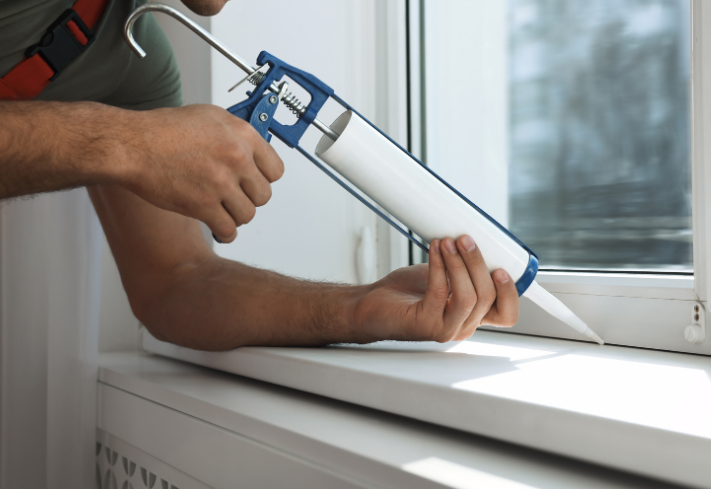
2. Use Natural Slug Deterrents
There are several natural substances that slugs hate. Here are some effective remedies:
- Salt: Create a salt barrier around entry points, but avoid using too much indoors as salt can damage surfaces.
- Copper tape: Slugs dislike copper because it gives them a mild electric shock when they touch it. Stick copper tape around door frames or other entry points.
- Eggshells or coffee grounds: Spread crushed eggshells or used coffee grounds near entry points. The texture is unpleasant for slugs, deterring them from crossing.
3. Create Slug Traps
Another effective way to deal with slugs is to trap them. Here’s how:
- Beer traps: Bury a shallow container (like a jar lid) in the ground and fill it with beer. Slugs are attracted to the smell, fall in, and drown.
- Grapefruit traps: Place an empty grapefruit half upside down in your home. Slugs are drawn to the scent and will gather underneath it overnight. The next morning, you can remove and relocate the slugs.
How to Kill Slugs in the House?
Sometimes, getting rid of slugs may involve killing them. Here are some humane yet effective ways to handle them.
1. Use Salt to Kill Slugs (with Caution)
Salt is one of the most well-known methods for killing slugs, as it dehydrates them upon contact. However, this should only be used as a last resort indoors, as excessive salt can damage your floors or carpets. Sprinkle a small amount directly on the slug or use it sparingly around damp areas.
2. Use Natural Slug Killers
If you don’t want to use salt, there are other natural ways to kill slugs:
- Diatomaceous earth: This natural powder is made from fossilized algae and is abrasive to slugs. Sprinkle it near entry points or on damp surfaces.
- Homemade slug sprays: Mix equal parts water and vinegar in a spray bottle and spray slugs directly. This kills them instantly and is safe to use indoors.
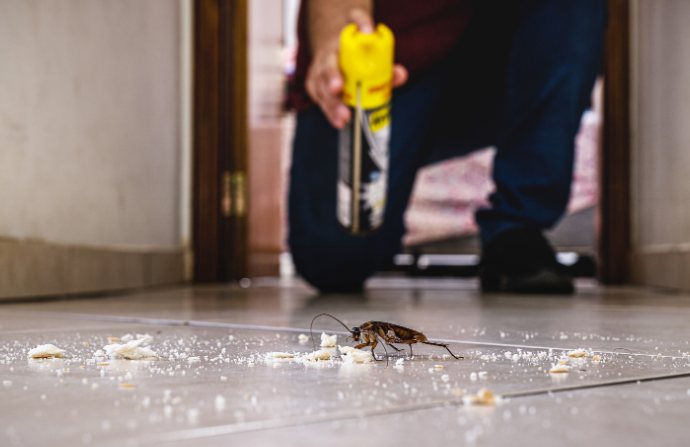
Can Chemicals Be Used Indoors?
While there are slug pellets and chemical solutions available, they’re not ideal for indoor use. These products can be toxic to pets and children. If you choose to use them, ensure they are placed in areas inaccessible to others.
How to Prevent Slugs from Coming Back?
Prevention is key to ensuring that slugs don’t return. Here are some practical tips:
Keep Your Home Dry and Ventilated
Slugs thrive in damp environments, so reducing moisture levels in your home is essential.
- Use dehumidifiers to keep the air dry.
- Fix leaks in pipes, taps, or roofs.
- Improve ventilation in areas prone to dampness, like bathrooms and basements.
Regular Cleaning and Maintenance
Slugs are often drawn to food and organic matter. Keep your home clean by:
- Sweeping or vacuuming floors daily.
- Storing food in sealed containers.
- Cleaning pet food dishes and spills immediately.
Use Physical Barriers Outside Your Home
To stop slugs from even reaching your house, consider setting up physical barriers:
- Spread gravel, sharp sand, or diatomaceous earth around the perimeter of your home.
- Place copper tape or mesh around outdoor pipes and garden areas.
Do Slugs in the House Mean Damp?
Yes, finding slugs in your house is often a sign of damp problems. Slugs are attracted to moisture, so their presence could indicate condensation, leaking pipes, or poor ventilation.
Fixing dampness not only helps prevent slugs but also protects your home from further damage, such as mould or structural decay.
Conclusion
Slugs coming into your house at night can be frustrating, but the good news is that it’s a fixable problem. By understanding why slugs are attracted to your home, addressing dampness, sealing entry points, and using natural remedies, you can effectively keep slugs out.
Remember, prevention is just as important as removal—take proactive steps to create an environment that slugs simply can’t tolerate.
FAQs About Slugs in the House
1. How do slugs get inside my house?
Slugs can enter through tiny gaps, cracks, or under doors. They’re especially drawn to damp areas and food.
2. Are slugs dangerous to humans or pets?
No, slugs are not dangerous. However, they can carry parasites, so avoid direct contact.
3. Why do slugs leave slime trails, and how can I clean them?
Slime trails help slugs move and protect their bodies. Clean them using a mix of warm water and vinegar.
4. Can slugs damage furniture or walls?
While they don’t chew through furniture or walls, their slime can stain surfaces if not cleaned promptly.
5. What should I do if I find slugs in my kitchen or bathroom?
Follow the steps to seal entry points, reduce moisture, and use natural deterrents to remove them.






















